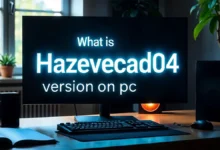Photeeq Lens Flare: The Ultimate Guide to Mastering Stunning Visual Effects

Table of Contents
- Introduction to Photeeq Lens Flare
- What Makes Photeeq Lens Flare Unique?
- How to Use Photeeq Lens Flare in Photography and Design
- Tips and Tricks for Creating Realistic Lens Flare Effects
- Common Mistakes and How to Avoid Them
- Advanced Techniques for Professional Lens Flare Creation
- Photeeq Lens Flare vs. Other Lens Flare Tools: A Comparison
- Integrating Photeeq Lens Flare in Video Editing and Motion Graphics
- Frequently Asked Questions (FAQs)
- Conclusion: Elevate Your Visuals with Photeeq Lens Flare
Introduction to Photeeq Lens Flare
Lens flare is a popular visual effect used by photographers, videographers, and graphic designers to add a dynamic and cinematic quality to images and videos. It mimics the way light interacts with a camera lens, creating streaks, rings, and glows that can enhance the overall mood and feel of a shot. Among the various tools available, Photeeq Lens Flare has carved out a niche for itself, offering intuitive controls and high-quality flare effects that can elevate your creative projects.
Photeeq Lens Flare is a plugin and effect resource widely appreciated for its realistic flare patterns and user-friendly interface. Whether you are a beginner looking to add a subtle glow or a professional aiming for dramatic sunbursts, Photeeq delivers with precision and style. The beauty of Photeeq lies in its flexibility—it allows users to customize every aspect of the flare, from intensity to color temperature, giving you full artistic control.
In this article, we’ll dive deep into what makes Photeeq Lens Flare stand out, how to apply it effectively, and some advanced tips that will help you master the effect like a pro. Whether you’re working in Photoshop, After Effects, or other creative software, understanding Photeeq Lens Flare will boost your visual storytelling and make your work shine.
What Makes Photeeq Lens Flare Unique?

When you look around the digital world, countless lens flare effects and plugins flood the market. So, what separates Photeeq Lens Flare from the rest? For starters, its realism and customization are key differentiators. Many lens flare tools offer preset flares that often feel artificial or generic, but Photeeq’s approach is about mimicking real optical phenomena.
Photeeq Lens Flare offers a range of flare elements inspired by actual camera lens imperfections and reflections, which means your effects won’t just look pretty—they’ll look natural. This attention to detail is crucial, especially in professional photography or high-end video production, where authenticity can make or break the immersion.
Additionally, the interface is streamlined and accessible. Unlike complex plugins that can overwhelm newcomers, Photeeq balances power with simplicity. The sliders and controls allow you to tweak parameters like brightness, flare shape, and color temperature intuitively. This makes the creative process more fluid, helping you experiment freely until you get the perfect shot.
Finally, Photeeq Lens Flare is designed to integrate seamlessly into popular creative workflows. Whether you’re using Adobe Photoshop for static images or After Effects for motion graphics, Photeeq’s compatibility ensures that the lens flare effects don’t just look great but also perform well, maintaining high resolution and consistency throughout your project.
How to Use Photeeq Lens Flare in Photography and Design
Using Photeeq Lens Flare effectively starts with understanding the basic principles of how lens flares occur in the real world. They usually happen when a bright light source—like the sun or studio lighting—hits the lens at certain angles, scattering light and creating visible artifacts.
In practical terms, you want your lens flare to complement the lighting conditions of your scene. If your photo or design has a natural light source, Photeeq Lens Flare can enhance this by adding a subtle glow or dramatic burst, amplifying the mood rather than distracting from the subject.
When applying the effect, first identify the light source’s position in your image. Photeeq allows you to place the flare precisely at that spot or slightly offset for artistic effect. Adjust the brightness to match the exposure of your scene, and then play with the shape and size to suit the composition.
For photographers, a good practice is to apply lens flare as a final step during post-processing. This ensures that your original image’s clarity and colors are preserved before adding the artistic glow. Designers often use lens flare to add energy and depth to digital artwork, making it ideal for sci-fi posters, album covers, and vibrant advertisements.
Tips and Tricks for Creating Realistic Lens Flare Effects
Creating a convincing lens flare is an art form in itself. With Photeeq Lens Flare, you have a great starting point, but knowing how to finesse the details will take your visuals to the next level.
First, subtlety is your best friend. Overusing lens flare can overwhelm the image and reduce the clarity of your main subject. Start with low opacity and build up gradually. Sometimes, less is more, especially if the goal is to keep the viewer’s attention where it matters.
Second, consider color temperature. Real lens flares often carry the color hues of the light source—warm yellows for sunsets, cool blues for moonlight, or harsh whites for studio lights. Photeeq allows color adjustment, so matching the flare color to your scene’s lighting enhances realism.
Another trick is to add multiple flare elements layered with different sizes and opacities. This mimics the complex reflections inside a real camera lens, which rarely produces a single uniform shape. By layering, you create depth and variation that looks much more organic.
Finally, use blend modes like Screen or Overlay in Photoshop or After Effects to integrate the flare smoothly with your background. This helps avoid harsh edges and makes the flare interact naturally with shadows and highlights.
Common Mistakes and How to Avoid Them
Even with the best tools, it’s easy to fall into some common traps when using lens flare effects. One major mistake is overdoing the effect. It’s tempting to crank up brightness or saturation to make the flare pop, but this often leads to an unnatural look that distracts from your image’s story.
Another pitfall is misplacement. Placing the lens flare in the wrong part of the image can confuse viewers and break the illusion of light direction. Always double-check your scene’s light sources and shadows before adding flare.
A third mistake is ignoring the image’s context. For example, a cold winter scene might look odd with a warm, golden lens flare. Matching the flare’s tone and intensity to the environment is crucial to maintain cohesion.
Lastly, poor resolution or pixelation is an issue when scaling lens flare elements improperly. Photeeq Lens Flare provides high-quality assets, but always make sure to work in high resolution and avoid enlarging effects beyond their native size to keep things crisp.



